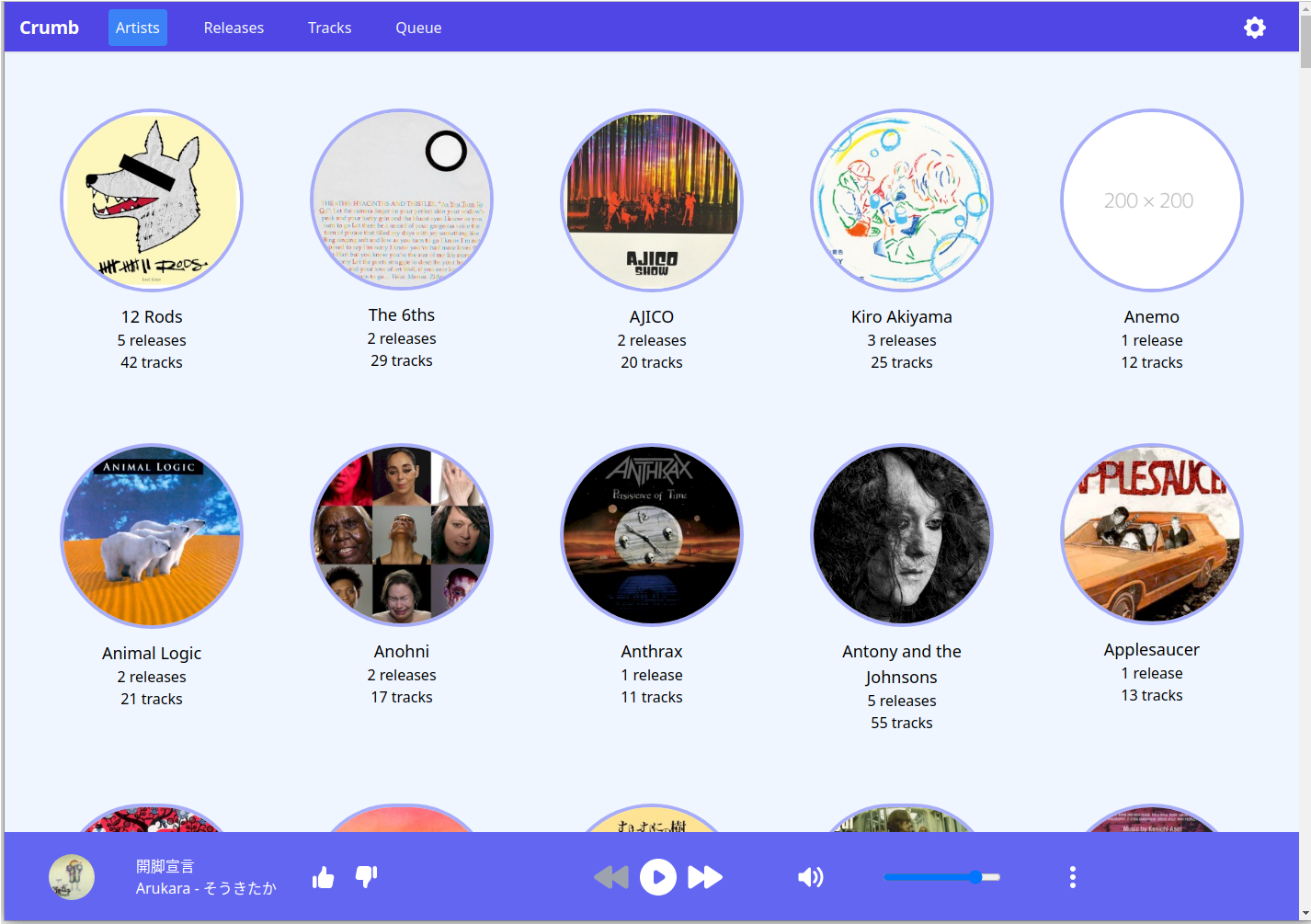As I mentioned in a previous post, I’ve been working on a music player for a while as a fun side project. Though since I’ve been jobless this has actually been my primary project, and I’ve probably spent more time coding than I did at work1.
My goal was always to build a backend that could support multiple frontends, especially a web app and mobile apps. I decided to work on the web app frontend first. I wanted to build a frontend quickly so I could work on the backend and importer and have a way to exercise them.
Rust can compile down to WASM, which means you can run Rust in the browser, and there are quite a few Rust frameworks for frontend development. Check out this LogRocket blog post for a good list that’s current as of early 20222. There are a number of options including some that provide an experience very similar to React or Elm.
My initial plan was to use Rust, but after a little investigation I ended up trying Flutter instead.
It promises to support both mobile apps and the web, and there was no Rust frontend framework that
did that. But then some quick experiments with Flutter’s web output convinced me not to use it.
Flutter’s web renderer works by creating a <canvas> tag and drawing your entire app inside it.
This means that nothing in the app works the way you’d expect. You can’t even select text without
explicitly re-implementing it. So it basically breaks everything the browser does. No. Just no.
So it was back to Rust. After looking at a few options, I decided to start with
Seed. It was web only, unfortunately, but it seemed like a good design. I
got something working fairly quickly and it was a good experience. The message-passing based API
meant I had to create a lot of Msg enums, basically one per component with any interactive
piece. And then I was constantly calling some_view(foo).map_msg(Msg::SomeViewMsg) because of the
message types. If this makes no sense, just trust me that it’s a bit annoying, but not a
dealbreaker.
But then a month ago, Jonathan Kelley announced Dioxus, which supports the web as well as mobile3 and desktop apps. This was exactly what I’d wanted!
So I decided to give it a try. If it worked well for the web app, I’d be way ahead on desktop and mobile versions too. I’ve been working with it for a few months and I quite like it. It’s very React-like, though since my last use of React was in 2017, the whole “hooks” thing is new to me. The Dioxus Discord community has been great, and the author has been incredibly responsive to questions and bug reports. Often he fixes things within minutes or hours of my report, and he’s also been very helpful when I’m confused about how to do something (which happens a lot).
I even wrote a first draft of a (web-only for now) router, which was a fun learning exercise for me. The Dioxus author merged it pretty quickly4, so it’s there for anyone else to try out too.
I’ve also released a few more Rust crates related to frontend work, but I’ll go into those in a future blog post. I’ll also talk a bit about how I set this up the development environment, and how I’ve so far managed to avoid needing any Node tools like webpack.
I’ll be looking for a new position soon5, but until then I’ll keep working on this app. It’s been a great learning experience, and a lot of fun too.
Hey, I was in management. I wasn’t slacking. ↩︎
Which means it will be out of date in a few months? Weeks? ↩︎
Just iOS for now though. ↩︎
So maybe he doesn’t have the best judgement all the time. ↩︎
My current plan is to start my search in March, but if you have a great Rust job for me please let me know. ↩︎
